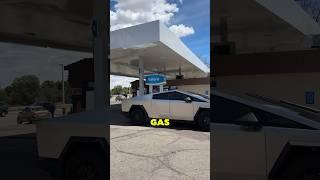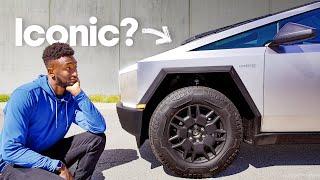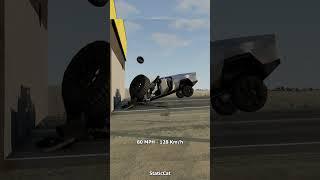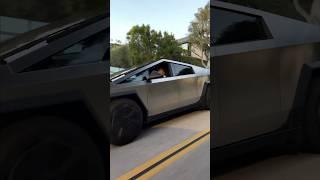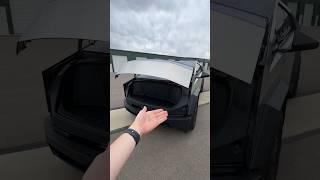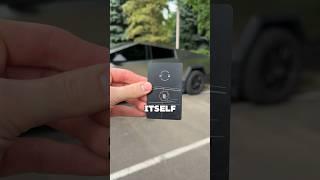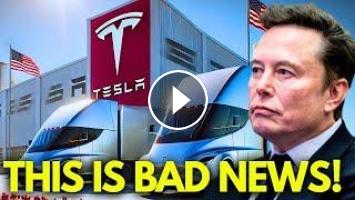Tesla’s Cybertruck was supposed to be the future—bold, futuristic, and revolutionary. But in just a few short weeks, it’s turned into a cautionary tale about what happens when innovation moves faster than safety.
The biggest recall in Tesla’s history has thrown the company into chaos, and it all boils down to one terrifying problem: a stuck accelerator pedal. Imagine pressing the gas, only for the pedal to get trapped, sending the truck speeding uncontrollably until you slam the brakes or shut it off entirely. Not exactly the futuristic driving experience Tesla promised. This isn’t just a minor glitch; it’s a full-blown safety crisis, and it’s raising serious questions about how such a basic flaw slipped through Tesla’s famously high-tech quality control.
The recall affects every single Cybertruck delivered so far—about 3,878 vehicles. While that number might seem small compared to recalls from legacy automakers, it’s a huge deal for Tesla. The Cybertruck was still in its rollout phase, and customers who had received one were now being asked to return it. Tesla has stopped deliveries, told owners not to drive their trucks, and is inspecting each one individually. The fix? A new pedal assembly that won’t get stuck. But here’s the kicker: this isn’t just about the pedal. It’s about how Tesla got here in the first place. An anonymous supplier revealed that Tesla changed the pedal material just weeks before launch to save weight and cut costs. Even worse, this change reportedly skipped extended safety testing because of pressure to meet Elon Musk’s public deadlines. That decision now looks like the spark that ignited this entire disaster.
The fallout has been instant and brutal. Tesla’s Giga Texas factory, the only plant building the Cybertruck, has gone silent. Production lines that were just ramping up have been shut down. Workers trained specifically for Cybertruck assembly are being reassigned or left with nothing to do. Vehicles already built but not yet shipped are sitting in holding areas, gathering dust. This isn’t just a pause; it’s a full reset. Tesla was aiming to produce 5,000 Cybertrucks a week by year’s end. That goal is now impossible. Redesigning the pedal, getting it tested and approved, and reinstalling it across the fleet could take weeks or even months. And every day of delay is a gift to competitors like Rivian and Ford, who are already seizing the moment to poach frustrated Cybertruck buyers.
But the pedal problem is just the tip of the iceberg. Internal leaks suggest Tesla was planning to unveil a high-performance Cybertruck "Sport" version later this year, complete with off-road features and custom tuning. That plan is now dead in the water. The recall has derailed not just the current model but the entire Cybertruck family before it even had a chance to launch. This was supposed to be Tesla’s next big thing—a game-changer for the EV world. Instead, it’s become a symbol of rushed production and ignored red flags. Industry insiders point to a familiar pattern: Tesla’s obsession with speed and hype over safety and readiness. Early testers reportedly flagged mechanical glitches, including issues with the steering system and odd handling on rough roads. But with Musk’s relentless push to deliver, those warnings were brushed aside. Sound familiar? It should. The Model 3 had similar growing pains, but Tesla managed to recover. This time, though, the stakes are higher, the competition is fiercer, and the public’s patience is wearing thin.
The biggest recall in Tesla’s history has thrown the company into chaos, and it all boils down to one terrifying problem: a stuck accelerator pedal. Imagine pressing the gas, only for the pedal to get trapped, sending the truck speeding uncontrollably until you slam the brakes or shut it off entirely. Not exactly the futuristic driving experience Tesla promised. This isn’t just a minor glitch; it’s a full-blown safety crisis, and it’s raising serious questions about how such a basic flaw slipped through Tesla’s famously high-tech quality control.
The recall affects every single Cybertruck delivered so far—about 3,878 vehicles. While that number might seem small compared to recalls from legacy automakers, it’s a huge deal for Tesla. The Cybertruck was still in its rollout phase, and customers who had received one were now being asked to return it. Tesla has stopped deliveries, told owners not to drive their trucks, and is inspecting each one individually. The fix? A new pedal assembly that won’t get stuck. But here’s the kicker: this isn’t just about the pedal. It’s about how Tesla got here in the first place. An anonymous supplier revealed that Tesla changed the pedal material just weeks before launch to save weight and cut costs. Even worse, this change reportedly skipped extended safety testing because of pressure to meet Elon Musk’s public deadlines. That decision now looks like the spark that ignited this entire disaster.
The fallout has been instant and brutal. Tesla’s Giga Texas factory, the only plant building the Cybertruck, has gone silent. Production lines that were just ramping up have been shut down. Workers trained specifically for Cybertruck assembly are being reassigned or left with nothing to do. Vehicles already built but not yet shipped are sitting in holding areas, gathering dust. This isn’t just a pause; it’s a full reset. Tesla was aiming to produce 5,000 Cybertrucks a week by year’s end. That goal is now impossible. Redesigning the pedal, getting it tested and approved, and reinstalling it across the fleet could take weeks or even months. And every day of delay is a gift to competitors like Rivian and Ford, who are already seizing the moment to poach frustrated Cybertruck buyers.
But the pedal problem is just the tip of the iceberg. Internal leaks suggest Tesla was planning to unveil a high-performance Cybertruck "Sport" version later this year, complete with off-road features and custom tuning. That plan is now dead in the water. The recall has derailed not just the current model but the entire Cybertruck family before it even had a chance to launch. This was supposed to be Tesla’s next big thing—a game-changer for the EV world. Instead, it’s become a symbol of rushed production and ignored red flags. Industry insiders point to a familiar pattern: Tesla’s obsession with speed and hype over safety and readiness. Early testers reportedly flagged mechanical glitches, including issues with the steering system and odd handling on rough roads. But with Musk’s relentless push to deliver, those warnings were brushed aside. Sound familiar? It should. The Model 3 had similar growing pains, but Tesla managed to recover. This time, though, the stakes are higher, the competition is fiercer, and the public’s patience is wearing thin.
- Category
- Cybertruck
Be the first to comment

